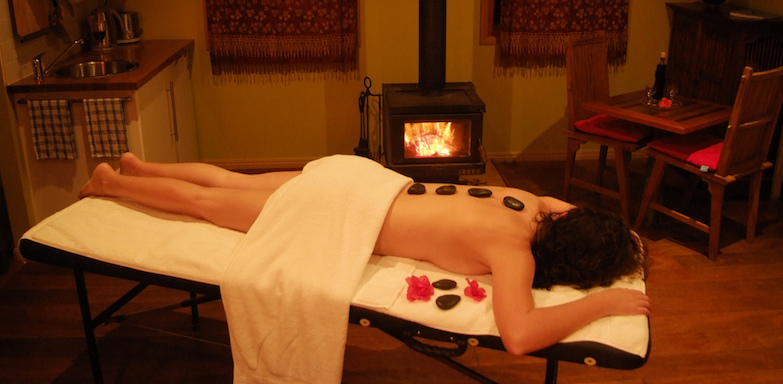
The dangers of opioids are becoming increasingly well known. Not only are these powerful drugs dangerous, research shows they may not be particularly effective at diminishing long-term pain. Fortunately, many new opioid-free avenues of treating chronic pain are emerging while traditional, ancient methods are gaining the modern stamp of approval through rigorous clinical trials. Combining cutting-edge treatments with lifestyle interventions is at the heart of a comprehensive pain management approach.
8 ways to practice comprehensive pain management in your life
1. Put together a pain healthy diet
You’ve heard it all before, but the research keeps piling up that eating healthy and incorporating more movement into your day helps reduce pain.
Research at the University of Delaware has even found that a diet and exercise program helped prevent knee pain in diabetic patients who are overweight. Both obesity and old age are risk factors for knee pain from osteoarthritis, and the scientists found that those who adhered to exercise and healthy eating were 15% less likely to experience pain.
The eating program was based on guidelines from the American Diabetes Association, with the day’s calories limited to 30% from fat and at least 10% from protein. Exercise programs involved 175 minutes per week—about 25 minutes per day—and mostly consisted of walking quickly.

2. Get moving with exercise
Exercise is a proven, simple, and effective way for pain patients to diminish discomfort and improve quality of life. Best of all, it doesn’t have to cost much. In many cases, it’s free.
You may think you need fancy workout gear or an expensive gym membership in order to get healthy, but in truth, you need little more than yourself, some comfy clothes (regardless of what they look like), and a decent pair of sneakers.
It’s important for pain patients to only do what feels good when working out. Exercise is intended to promote health, but push too hard or too fast and the exact opposite can happen. You’ll end up hurt or sprained, or just frustrated. Start slow, listen to your body, and go at your own pace. Sometimes, you can’t feel your body’s full reaction to an exercise until the next day, so when in doubt, back off and see how your muscles feel tomorrow. Constantly tuning into your body and seeing how it feels will help you tailor each workout’s intensity to meet your own personal needs.
Here are the best cheap or free ways for pain patients to exercise in order to find comprehensive pain management for their whole body.
Walking
Walking is a wonderful way for pain patients to exercise. A brisk pace is best, but any speed you can manage is perfect. Start out slow and increase the pace and duration as feels comfortable for you.
Walking is easy on the joints while weight-bearing enough to promote bone health. It also gets you outside in the fresh air, another boost to health. Taking a walk after dinner revs up your metabolism, helping you digest food. And the barriers to entry are almost none. As long as your legs feel good enough to walk, you can head out your door and go anywhere.
Bicycle
Biking is easy and fun. Although bikes can be costly, the large chain stores sell more affordable ones. For an ultra budget option, look on Craigslist or in the newspaper classifieds for used bikes. If you buy a used bike, make sure to test it carefully before buying to make sure it’s in good working condition, or at the very least to ensure you know of any repairs that will need to done.
When you hit the road, options include bicycling through your neighborhood or around town. Many cities have longer trails suitable for biking.

Calisthentics
Calisthenics involves using your body’s own weight to build muscle. It’s very easy, can be done anywhere, and because the only tool used is your own body, requires no equipment, although an exercise mat could come in handy.
ElderGym offers a few great workout tips targeted for seniors to build back muscle. Many people with back pain also have weak back muscles. Incorporating strengthening exercises into your routine a few times a week could help with comprehensive pain management. It could also improve your balance since back muscles stabilize the spine and support the body’s entire core.
For an in-bed routine you can practice every morning:
- First, point and flex your feet to lubricate your ankle joints and work your shin muscles. Then do a few ankle rolls, rolling each ankle in both directions three to five times each way.
- Now it’s time to work the legs. Bend one knee and place the foot flat on your bed. Next, use the thigh muscles to lift the opposite leg a few inches off the mattress. Lower down slowly, repeat ten times, and then complete the other side.
- If it feels good, also stretch your arms overhead, opening up the shoulders and upper back that tend to tighten up when we’re feeling stressed or have simply not been very active.
- If you’re looking for a little bit more intensity, consider a plank, which resembles the top of a pushup. This posture is excellent to help pain patients build core strength and firm up the arms.
Online workouts
The range of activities you can do online is astounding. YouTube offers a plethora of free options, offering workouts for just about any activity you could dream of, from beginner’s dance lessons to Zumba to yoga and Pilates, tai chi and more. Some of the workouts are short because they’re free, but you can always combine several workouts into one session as your stamina increases.
Another great, free option is Grokker, which offers a range of fitness workouts in addition to cooking videos designed to improve your health from multiple angles. There’s a paid subscription available that gives you access to an unlimited number of premium videos, but you can still watch a large number for free.
3. Try out herbs
Before Western pharmaceuticals and opioids, there were herbs. For centuries, practitioners of ancient medical systems relied on plants for a comprehensive pain management approach.
Ancient Chinese medicine, in particular, has a rich herbal tradition. Ginger, for instance is a potent anti-inflammatory. Eat it freshly grated in your food or drink it in tea. To make tea, cut a few pieces of ginger and boil them in water for about ten minutes. Buy bulbs of ginger in your grocer’s produce section. Fresh ginger is much more powerful than the dried herbs you find in bottles.
Another powerful anti-pain herb is ginseng, which may help with fibromyalgia, headaches, joint pain, and nerve pain. Ginseng supplements are available, but it’s important to talk to your doctor before taking any herbs. Some of them can affect medications you may be on.
Ayurveda from India is another powerful ancient system of medicine. To treat tension-related pain the Ayurvedic way, try kava kava, which comes in a tea or supplement form, chamomile, or passionflower, recommends Yoga International.
4. Use topical ointments or creams
Ointments are topical gels or creams, and many of them are very effective for comprehensive pain management.
One popular ointment is capsaicin, which is the active ingredient that gives peppers heat. While this preparation may burn when first applied, that burning sensation eventually overwhelms the nerves causing pain, leading them to temporarily quiet, according to Pain Doctor. The relief eventually fades, but you can apply the ointment up to several times a day.
An ointment good for tension-related pain is Narayan gel. This ancient Ayurveda formula combines the essential oils camphor and menthol in a beeswax formulation to penetrate the skin and loosen tight muscles. It smells quite strong, but provides a cooling sensation perfect for relieving neck tension. You could also apply it on your back or other areas feeling tight.
5. Get a massage
While you probably can’t get a massage as often as you like, incorporating this self-care activity into your schedule as much as possible could do wonders for your chronic pain management.
Massage reduces tension and stress, frees up adhesions that can interfere with proper skeletal alignment, and improves circulation. Each massage therapist has a different style, so try a few to find a masseuse whose style leaves you feeling relaxed and in less pain.

6. Talk to a chiropractor or physical therapist
Much of the body’s pain develops when the musculoskeletal system comes out of alignment. This happens to many people from the rigors of daily living. However, with the modern, mostly sedentary lifestyle, taking steps to ensure optimal musculoskeletal alignment is even more important. While healing practices like yoga help to encourage proper alignment, sometimes a little more help is needed.
Chiropractors have the ability to evaluate each patient, determine where the body is out of alignment, and then perform special techniques that are all natural and drug-free to help patients reduce pain and enjoy more fluid movement.
Chiropractors are also a great starting off point to explore other comprehensive pain management therapies since they focus on treating the whole person, body and lifestyle, and not just the physical components.
Modern research studies are now quantifying the benefits of this practice. For example, a study from the National Center for Complementary and Integrative Health found that spinal manipulation treated acute neck pain more effectively than medication.
Another great option is talking to a physical therapist, who can help with muscle-related injuries or deficits.
7. Look for an interventional pain management doctor
Patients who have not responded well to physical therapy or other less invasive forms of treatment may be good candidates for interventional pain management options, such as:
- Spinal cord stimulation
- Radiofrequency ablation
- Epidural steroid injections
These treatment options vary for the conditions they treat and how they can help. In the following video, Dr. Tory McJunkin talks about how talking through these comprehensive pain management treatment options with a doctor could help you.
8. Take care of your mental health
As Dr. McJunkin also discusses in the video, paying attention to your mental health is another critical component of a comprehensive pain management plan. A recent post talks about the role of mental health help in chronic pain management. In that post, we noted:
“Chronic pain also affects social, occupational and recreational activities in the lives of those affected. The discomfort can be unbearable and increasingly difficult to verbalize to others including close friends and family. Feelings of seclusion and detachment may cause negative thought patterns to emerge, which may make the treatment of pain more difficult. Although the primary focus of medical treatment is understandably on the biological component of chronic pain, the social and psychological influences of chronic pain conditions can also be critical for a patient to achieve long-term success in pain management.”
Check out that post for more information on finding a mental health specialist to help with your chronic pain. Or, you can check out any of our other posts on chronic pain and mental health concerns.
Towards comprehensive pain management
If you suffer from chronic pain, there is hope. You don’t have to live with your pain, day in and day out. We recommend beginning with simple lifestyle interventions to manage your pain. If those don’t work, reach out to a dedicated chronic pain management doctor who can help you find the cause of your pain and suggest therapies that could work.